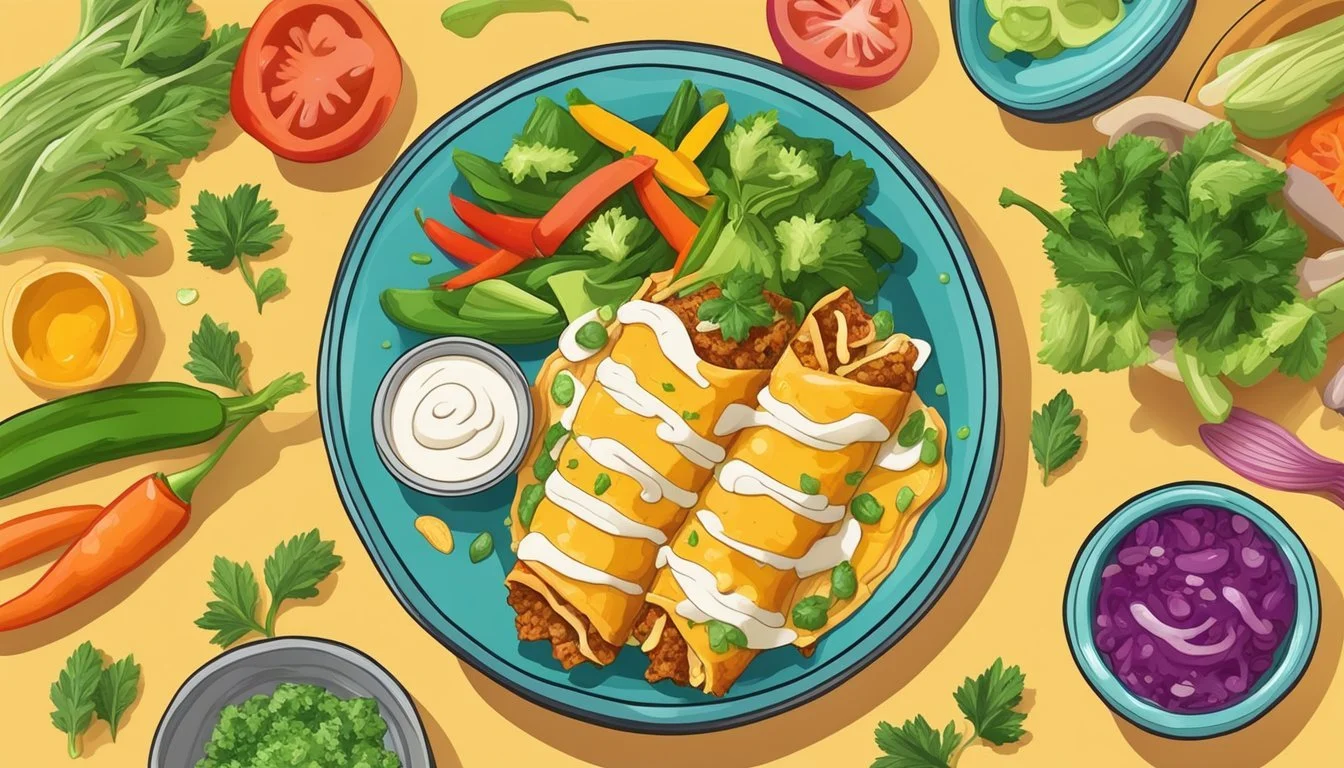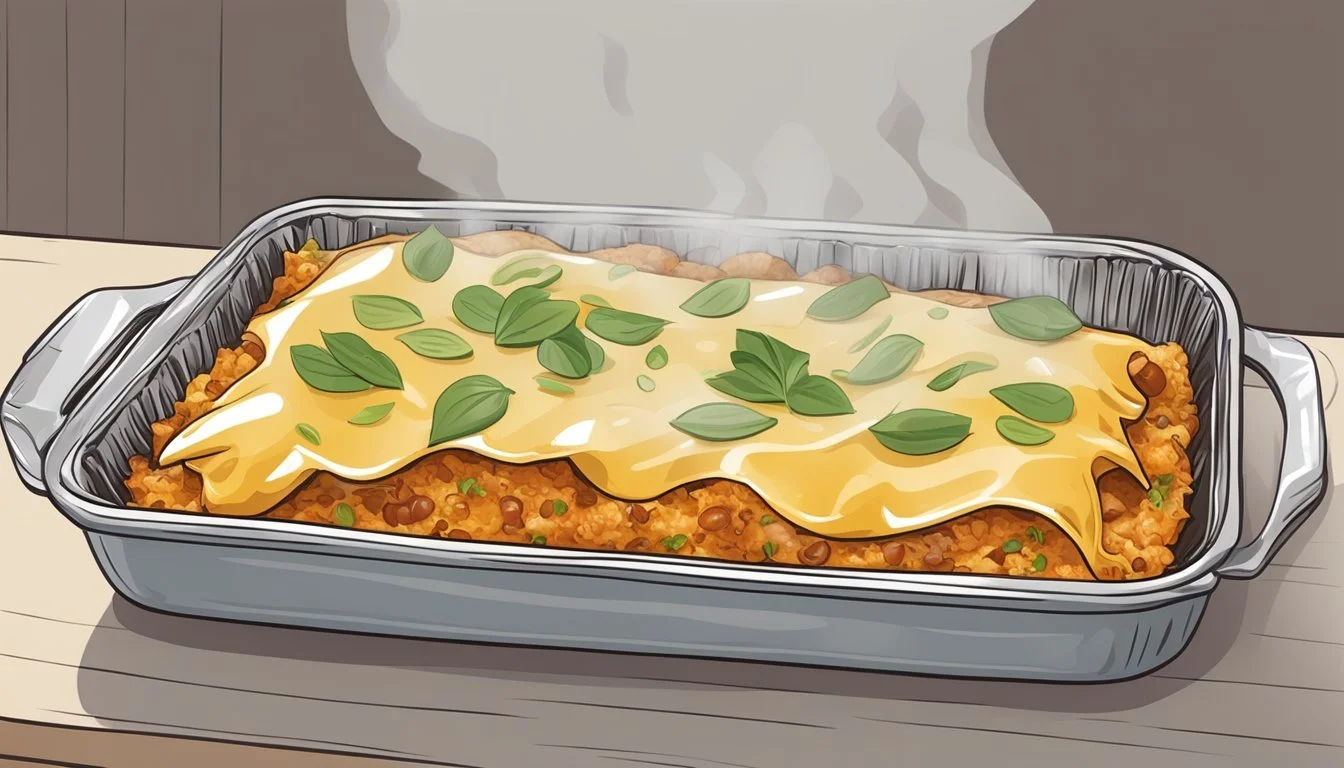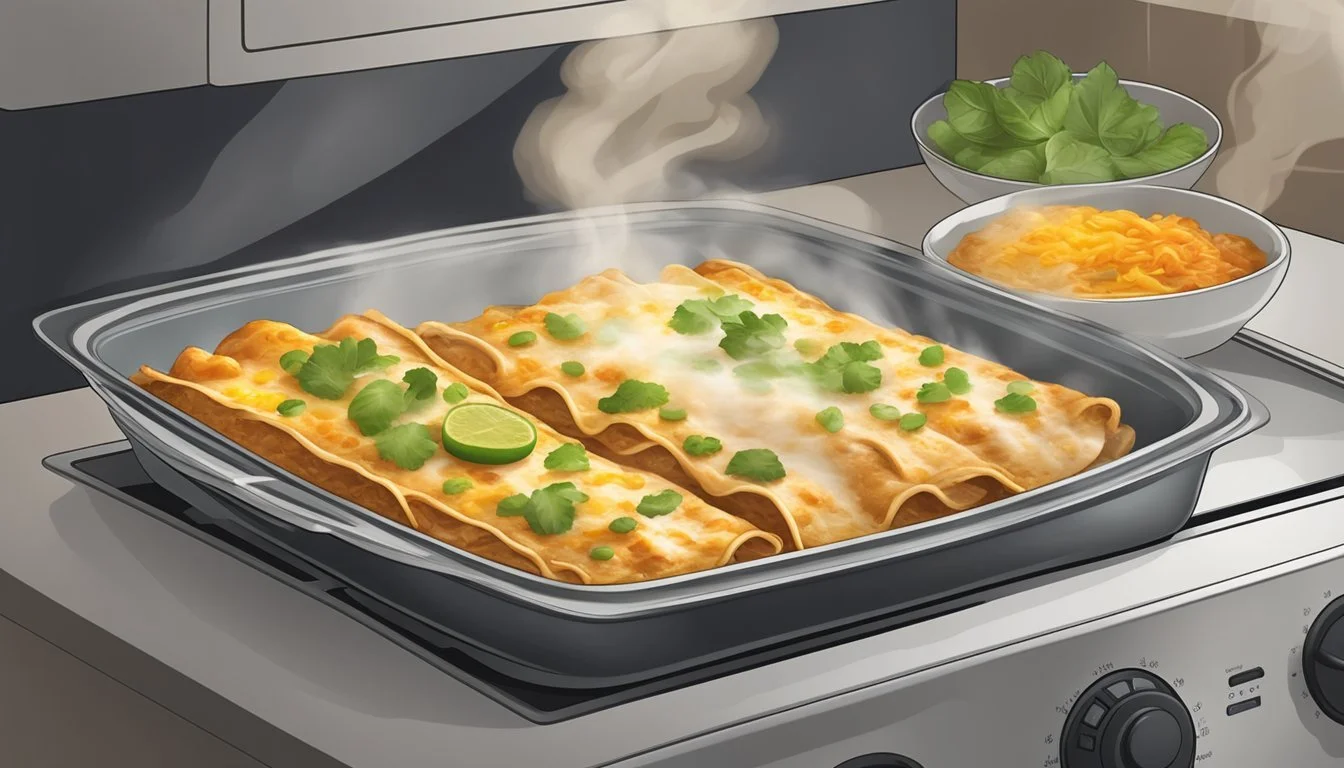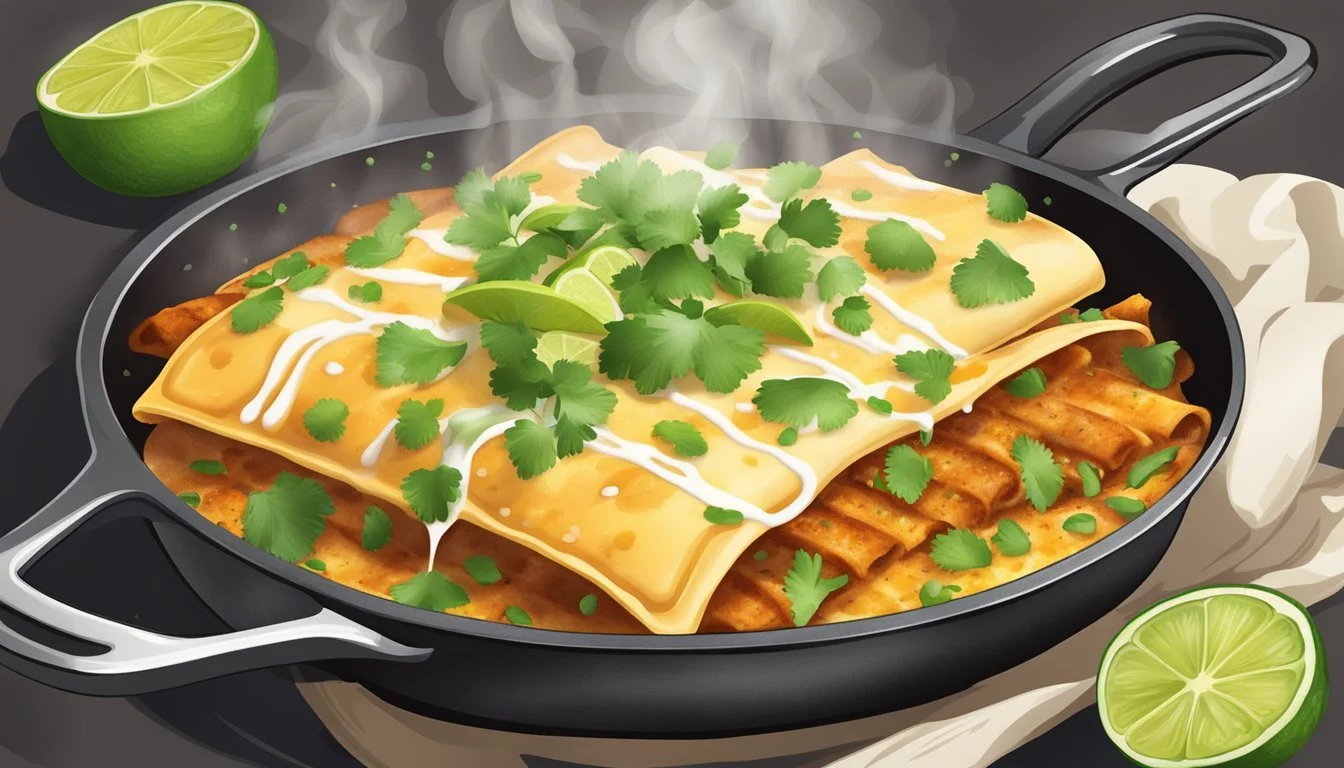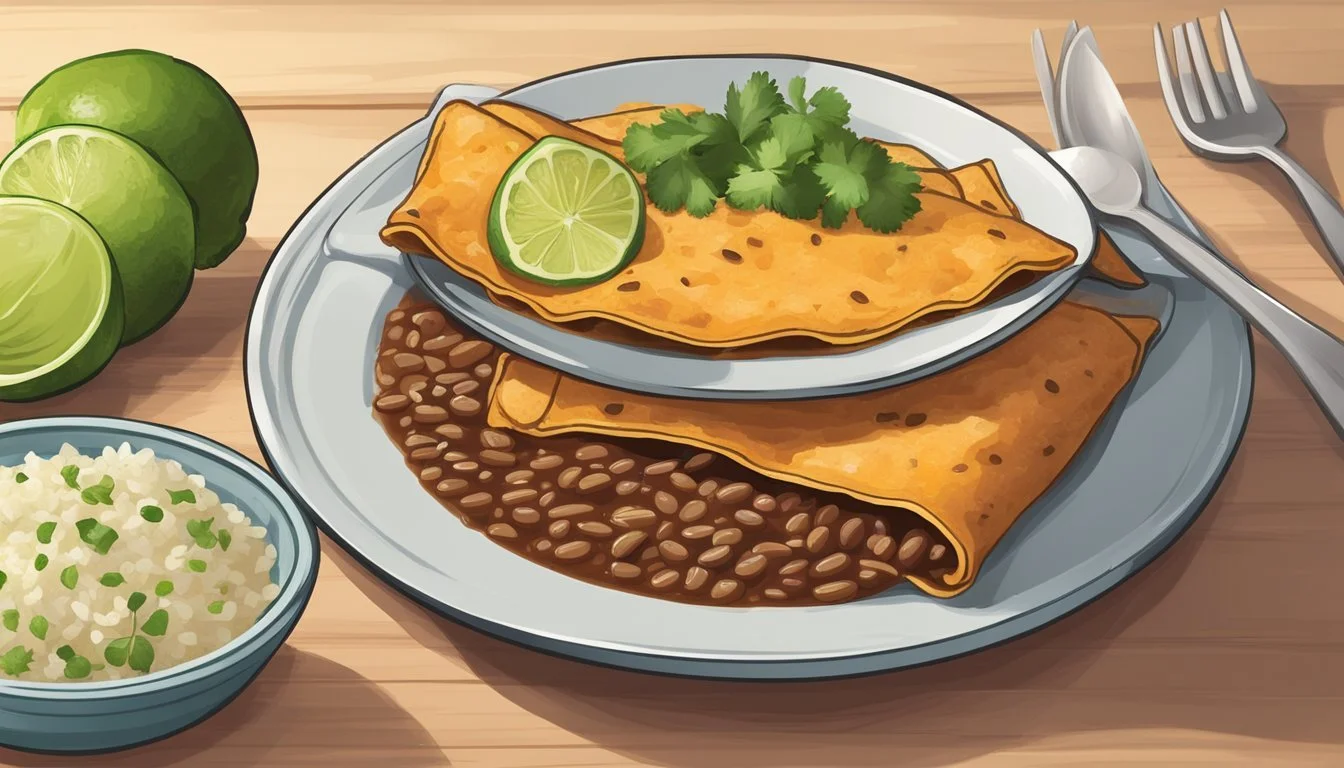How to Reheat Gluten-Free Enchiladas for Perfect Texture Every Time
Reheating gluten-free enchiladas can be straightforward and easy when you know the right techniques. Whether you have leftover homemade enchiladas or a batch you prepared earlier, maintaining their delicious texture and flavor is key. To perfectly reheat gluten-free enchiladas, use an oven set to 350°F (175°C) for about 20 minutes, ensuring the centers are heated and the cheese is fully melted.
For those busy weeknights when a quick dinner is essential, microwaving may be an option. Cover the enchiladas with a damp paper towel and microwave on medium power for 2-3 minutes, checking frequently to avoid overcooking. This method retains the moisture and keeps the enchiladas from drying out.
If you prefer a crispier finish, consider reheating on the stovetop. Place the enchiladas in a skillet over medium-low heat and cover with a lid, adding a splash of water to create steam and preserve the dish's integrity. This way, you can enjoy gluten-free enchiladas that taste just as good the second time around.
Understanding Gluten-Free Enchiladas
Gluten-free enchiladas are crafted using specific ingredients to ensure they remain free from gluten without sacrificing flavor or texture. It's crucial to choose the right tortillas and ingredients to achieve the perfect result.
Core Ingredients for Gluten-Free Enchiladas
The primary components of gluten-free enchiladas include gluten-free tortillas, a filling (often chicken, beef, or vegetarian), and cheese. The enchilada sauce is also central to the dish.
Chicken or beef is commonly used as the main protein. Pre-cooked options like rotisserie chicken can save time and offer great flavor. For vegetarian versions, refried beans or vegetables can replace the meat.
Cheese is another essential ingredient. Cheddar, Monterey Jack, or a blend of Mexican cheeses work well.
The sauce often made from tomatoes, chili powders, and other spices, complements the dish and binds the flavors together.
Selecting the Right Gluten-Free Tortillas
The choice of tortilla significantly affects the outcome of the dish. Corn tortillas are naturally gluten-free and often used due to their traditional flavor and texture.
When selecting tortillas, ensure they are certified gluten-free. Some corn tortillas might contain traces of gluten due to cross-contamination during processing.
Other options include gluten-free flour tortillas, which might offer a different texture preferred by some.
Warming the tortillas before assembling the enchiladas can prevent cracking. You can do this by lightly toasting them on a dry skillet or microwaving them briefly wrapped in a damp cloth.
Choosing the right tortillas ensures a perfect base for the enchiladas, making them easy to roll and delicious to eat.
Preparation Before Reheating
Proper preparation ensures gluten-free enchiladas are handled safely and retain their quality. Follow these specific steps for storing and thawing to keep them delicious and safe to eat.
Handling Leftover Enchiladas Safely
When dealing with leftover gluten-free enchiladas, store them in an airtight container in the refrigerator within two hours of preparation. For corn tortillas, this helps maintain their texture and prevents them from becoming too hard. If you can't reheat them within three to four days, it's best to freeze them for longer storage.
Before freezing, wrap each enchilada individually in aluminum foil or plastic wrap, then place them in a freezer-safe bag. Label with the date to keep track of freshness. Taking these precautions reduces the risk of contamination and ensures the enchiladas stay in optimal condition.
Thawing Frozen Enchiladas
Thawing frozen enchiladas can be crucial for best results. Transfer the frozen enchiladas from the freezer to the refrigerator the night before you plan to reheat them. This slow thawing process retains moisture in the corn tortillas and helps them reheat evenly without drying out.
If time is limited, you can use the microwave’s defrost setting. Place the enchiladas on a microwave-safe plate and cover with a damp paper towel. Defrost for several minutes, checking periodically to ensure they are thawing evenly. Avoid using high heat to prevent the tortillas from becoming mushy.
By following these steps, your gluten-free enchiladas will be safe and ready for reheating, whether they were stored in the refrigerator or the freezer.
Reheating Techniques for Enchiladas
Reheating gluten-free enchiladas requires careful methods to maintain texture and flavor. Utilize the oven, microwave, or skillet to achieve the best results.
Oven Reheating for Optimal Texture
Begin by preheating the oven to 350°F (175°C). Place the enchiladas in a baking dish and cover them with foil to prevent drying. Bake for 20-25 minutes.
After 20 minutes, check if the enchiladas are thoroughly heated by slicing through the center. If steam rises and the filling is hot, they are ready. If not, continue baking until the internal temperature reaches 165°F (74°C).
For additional moisture, sprinkle some extra enchilada sauce over the top before covering with foil.
Microwave Reheating for Quick Results
Place the enchiladas on a microwave-safe plate. Use a splatter guard and microwave on high for two minutes. Check if they are heated by piercing the center.
To ensure better heat distribution, poke some holes in the top of the enchilada or cut it into smaller pieces. Cover with a damp paper towel to retain moisture, preventing the tortillas from drying out.
Microwave in additional 30-second intervals if needed until the desired temperature is reached.
Skillet Reheating to Retain Moisture
Heat a skillet over medium heat. Add a small amount of oil to prevent sticking and place the enchiladas in the skillet.
Cover the skillet with a lid to trap steam, which helps retain moisture. Heat for about 5 minutes on each side. Check if they are heated through.
For added flavor, pour some leftover enchilada sauce into the skillet during the last few minutes of heating. This helps to keep the enchiladas moist and adds a fresh burst of flavor.
Enhancing the Flavor of Reheated Enchiladas
Enhancing the flavor of reheated gluten-free enchiladas is all about choosing the right sauce and toppings, as well as garnishing with fresh ingredients. These steps ensure your dish remains delicious and satisfying.
Choosing the Right Sauce and Toppings
Selecting the right sauce is crucial. Enchilada sauce is a popular choice, available in both red and green varieties. Red enchilada sauce often includes chili powder and cumin, offering a rich, smoky flavor. Green enchilada sauce, made from tomatillos and green chiles, provides a tangy, slightly spicy taste.
For toppings, shredded cheese like cheddar or Monterey Jack can be added before reheating to melt and enhance the dish. Additional toppings such as salsa, guacamole, or a dollop of sour cream can elevate the flavors.
Using Fresh Ingredients to Garnish
Fresh ingredients bring a burst of flavor and a visual appeal to reheated enchiladas. Fresh cilantro, chopped and sprinkled on top, adds a fragrant aroma and a hint of citrus. Pico de Gallo, a fresh salsa made from diced tomatoes, onions, and cilantro, offers both crunch and brightness.
A squeeze of fresh lime juice can also enhance the dish, adding a refreshing tang. In addition, thin slices of avocado or a drizzle of crema can provide a creamy texture that complements the warm, spicy enchiladas.
Serving Suggestions for Gluten-Free Enchiladas
When serving gluten-free enchiladas, consider pairing them with complementary sides that enhance the meal. Balancing the dish with healthy options can provide a satisfying and nutritious dining experience.
Pairing with Sides
Pair gluten-free enchiladas with Mexican rice for a classic and filling side. The rich flavors of the rice complement the enchiladas, providing a cohesive taste experience. A side of refried beans offers a hearty and protein-packed option.
For a lighter alternative, consider black beans seasoned with cumin and lime.
A mixed greens salad with tomatoes, avocado, and a light vinaigrette can add a refreshing and crisp contrast to the warm, savory enchiladas. For additional texture and flavor, consider adding a small side of corn or a few slices of grilled vegetables.
Balancing the Meal with Healthy Options
Include a variety of vegetables to create a balanced meal. A side salad with colorful vegetables such as bell peppers, cucumbers, and radishes can add essential nutrients and a satisfying crunch. Incorporate quinoa or brown rice in place of traditional Mexican rice for a fiber-rich alternative.
Adding a side of steamed or sautéed vegetables such as zucchini, broccoli, or spinach introduces necessary vitamins and minerals. Fresh sliced avocado or a simple guacamole offers healthy fats that enhance the overall nutritional profile.
For a lighter option, serve a small bowl of gazpacho or a chilled tomato soup, which can be refreshing and nutritious.
Storage Tips for Gluten-Free Enchiladas
Proper storage of gluten-free enchiladas ensures food safety and maintains their taste and texture. Here are useful tips for storing leftovers and correctly freezing or refrigerating enchiladas.
Storing Leftovers for Later Use
Leftover enchiladas should be cooled to room temperature before storing. Use airtight containers to prevent moisture loss. Glass containers with tight-fitting lids or BPA-free plastic containers are excellent choices.
Label each container with the date to keep track of how long the food has been stored. Refrigerate the enchiladas within two hours of cooking to avoid bacterial growth. Leftovers can be stored in the refrigerator for up to four days.
To reheat, place the enchiladas in an oven-safe dish and cover with aluminum foil to avoid drying out. Heat at 350°F (175°C) for about 20 minutes, or until thoroughly warmed.
Freezing and Refrigerating Enchiladas Properly
For longer storage, freezing is the best option. Place individual portions of enchiladas in freezer-safe containers or wrap them tightly in aluminum foil and place in freezer bags. Remove as much air as possible to prevent freezer burn. Label each package with the date.
To freeze fully assembled enchiladas, first flash freeze them on a baking sheet for about an hour. Then, transfer to containers or wrap securely.
Refrigerated enchiladas should be stored in airtight containers to maintain freshness. Consume refrigerated enchiladas within four days. If reheating from frozen, preheat the oven to 350°F (175°C) and bake for 30-35 minutes, ensuring they are heated throughout.
Maintain proper food safety by always checking that enchiladas are reheated to an internal temperature of 165°F (74°C) before consuming.
Creating Your Own Gluten-Free Enchilada Sauce
Making your own gluten-free enchilada sauce can ensure quality and avoid unwanted ingredients. It also allows customization for desired flavors and spice levels.
Homemade Sauce Versus Store-Bought
Homemade gluten-free enchilada sauce provides many benefits over store-bought versions. Control over ingredients ensures no hidden gluten or preservatives. For those with dietary restrictions, this can be crucial.
Store-bought sauces often contain additives or stabilizers. Homemade sauces allow for fresh ingredients and adjustments to taste and consistency. This also accommodates personal preferences for spice levels, enhancing the overall dish flavor.
Simple Recipes for Gluten-Free Enchilada Sauce
Several simple recipes can easily be followed to make gluten-free enchilada sauce.
One option involves combining tomato paste, spices like chili powder and cumin, and chicken stock. Thickening can be achieved with arrowroot powder or xanthan gum. Simmering the mixture for a few minutes enriches the flavors.
Another method uses sautéed garlic, canned tomato sauce, and vinegar. Spices are added and the mixture is simmered to let flavors meld together. The simplicity of these ingredients makes it easy to create a tasty and gluten-free sauce at home.
By preparing sauce at home, you can enjoy enchiladas that are both delicious and suitable for a gluten-free diet.
Customizing Your Enchiladas
Tailoring gluten-free enchiladas to suit individual tastes and dietary needs can be simple. Various ingredient alternatives and the inclusion of different proteins and vegetables can transform this dish into a versatile meal.
Alternatives for Dietary Restrictions
Using dairy-free cheese instead of regular cheese can make enchiladas suitable for those who avoid lactose. Brands like Daiya or Follow Your Heart offer dairy-free shredded cheese options that melt well.
When looking at the tortilla itself, it's important to choose gluten-free varieties. Corn tortillas are a popular choice. For a grain-free option, consider using tortillas made from cassava flour.
Plant-based versions can replace meat with lentils or black beans. For those avoiding certain spices or allergens, homemade enchilada sauce allows control over ingredients like cumin, chili powder, and garlic.
Experimenting with Different Proteins and Vegetables
Common protein options include chicken and beef. For a twist, ground turkey or pork can also be used. To cook chicken, it should be seasoned and cooked until golden brown, then shredded to allow for even distribution in the enchiladas.
Adding a range of vegetables can enhance the flavor and nutritional profile. Bell peppers, zucchini, and spinach work well in the mix. Roasting or sautéing these vegetables beforehand can deepen their flavors.
For pescatarians, shrimp or white fish can replace traditional proteins. Ensure to cook the seafood separately and add it to the enchiladas just before baking to prevent overcooking.
Exploring different combinations of ingredients allows for endless possibilities in creating a customized, delicious gluten-free enchilada dish.


